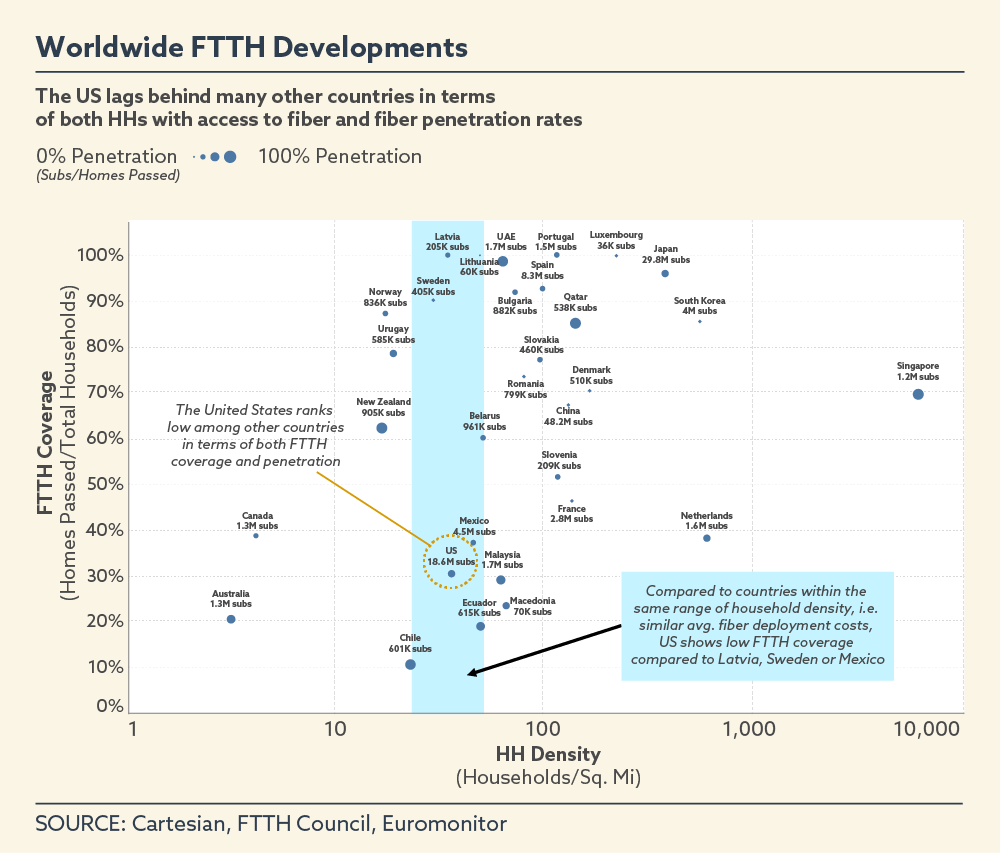All-fibre may reach 50% of US households by 2025

According to a recent study from Fiber Broadband Association (FBA) and strategy consulting firm Cartesian, that deployment of all-fibre networks should reach around 50% of US households by 2025.
According to a recent study from Fiber Broadband Association (FBA) and strategy consulting firm Cartesian, that deployment of all-fibre networks should reach around 50% of US households by 2025.

Lisa R. Youngers
PRESIDENT AND CEO OF THE FBA
According to the FBA accelerated all-fibre builds are driven by increasing consumer demand for higher performance broadband, provider willingness to focus on long-term returns and government efforts to lower barriers to deployment costs and provide targeted subsidies. Furthermore, a 2018 White Paper from the FBA entitled ‘The Road to 5G is Paved with Fiber’ explains how a substantial amount of wireline fibre will be needed to support next generation wireless networks. The report estimated that 265,448 of fibre cable would be required to provide full 5G service to just the top 25 metropolitan land areas in the United States, assuming those 5G cells are served by fibre.
The objective of ensuring virtually everyone has access to future-proof networks can be achieved through innovative deployment models, government efforts to lower access to essential infrastructure and efficiently provided government support. By 2029, it should be possible to pass 90% of US households, if current spending on all-fibre networks is increased by approximately an additional US$70 billion. However, passing 80% of U.S. households with fibre will require spending approximately an additional US$50 billion.
“Building all-fibre networks throughout America is not a pipe dream,” said Lisa R. Youngers, President and CEO of the FBA. “We have long known that having access to all-fibre networks is far superior than other technologies in driving economic growth, social interaction, and political engagement. By leaving so many Americans, primarily rural residents and businesses, without access to all-fiber connectivity, we are depriving them of innumerable economic, social, and educational opportunities – opportunities that are available throughout more urban areas. We need to dedicate ourselves to bridging the all-fiber divide.”
Rural broadband is a priority for the US federal government, with the FCC and US Department of Agriculture distributing loans and grants. The FCC plans to distribute up to $1.98 billion over 10 years as part of its Connect America Fund Phase II. At present, over 19 million Americans lack access to broadband, with the vast majority living in rural communities. 24% of rural Americans lack access to 25 Mbps service, but less than 2% of urban Americans lack this same broadband access. FBA says that deploying fibre in rural communities will be a key step to solving the digital divide in the United States.





